Zen for nothing (“Zen for Nothing”). What does this mean? According to the Antai-ji—the Japanese Sōtō Zen monastery where the movie Zen for Nothing was filmed—, Zazen (”sitting meditation”), if practiced solely for the purpose of Zazen, it's no use at all! But only if done right! Pero ”nought” it's important. What is nothing? Nothing is nothing, emptiness, a vacuum. Un Enso. Oh my! You have to experience it, not just know it. Is Zen nothing? It's an experience. What is Zen? It's attaining your true nature, before you think, your buddhadic nature, which must be experienced, not just understood. In the same way, the film, Zen for nothing, has to be experienced, not just seen or learned from this review. But everyone can experience the film, not just followers of Zen Buddhism. All that is required is interest and will. The film is available on DVD, with subtitles in English, German and French.
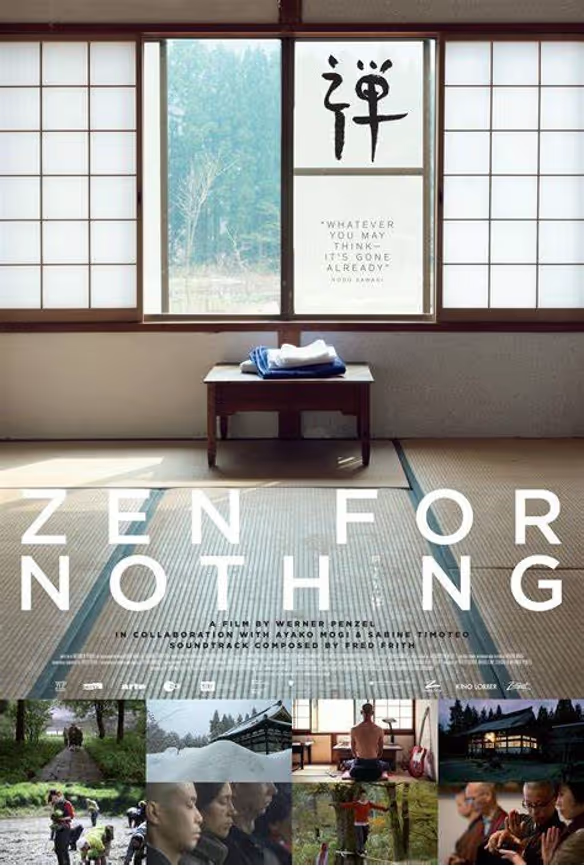
Zen for nothing is a German-Swiss film, released in 2016 and excellently directed and filmed by German film director Werner Penzel, with an atmospheric and innovative soundtrack by English multi-instrumentalist and composer Fred Frith. The film is about the experience of a Swiss actress and dancer, Sabine Timoteo, who spent part of the fall, winter and spring of 2014/2015 living and working as a lay practitioner in a Zen Sōtō monastery in Japan. Zen for nothing, which is 100 minutes long, is described as a documentary, but it is not a documentary in the conventional sense, since there is no narrative as such, only the sounds of Sabine and other people talking, of silences, of songs, of Buddhist percussion instruments and other sounds, natural and artificial. And, of course, also images, of movement and stillness, in and around the monastery and in other places.
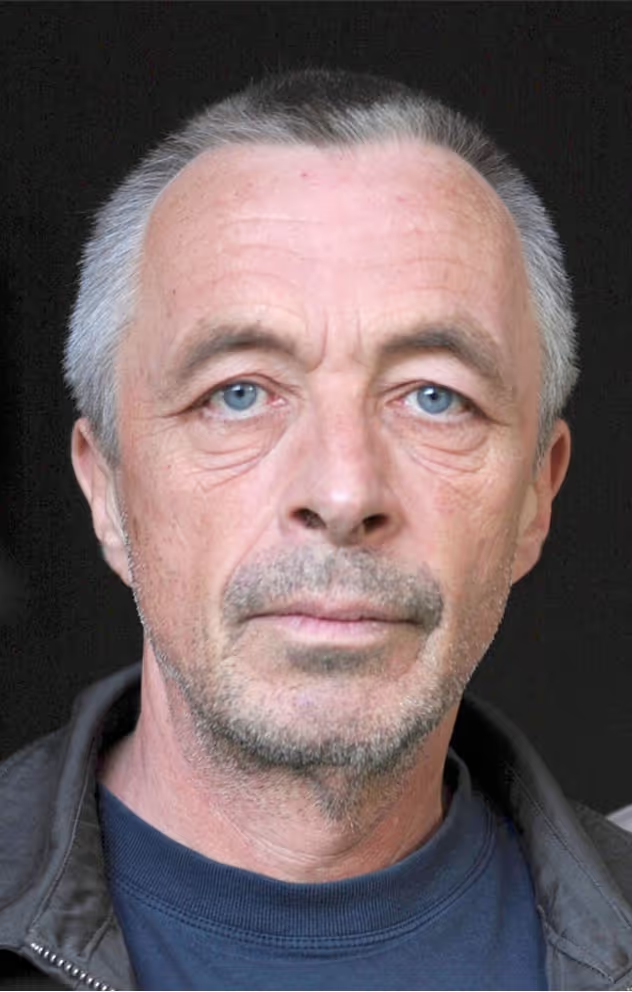
Chan Buddhism is the origin of Zen Buddhism. Japan's Sōtō and Rinzai Zen Buddhist schools, Korean Son Buddhism, and Vietnam's Thien Buddhism developed from Chan Buddhism, a form of Chinese Buddhism that is a fusion of Buddhism Dhyana Indian and Chinese Taoism. All of these schools of Buddhism are essentially the same in their principles, yet different in their practices. Simplistically, everything can be described as ”Zen Buddhism”.
The film Zen for nothing was filmed in Antai-ji, a small Zen Sōtō monastery in the wooded hills of northern Hyōgo province, in western Japan, with views of the Sea of Japan. Antai-ji was originally founded in 1921 in Kyoto, but moved to Hyōgo province in 1976. The monastery is known for its study of Dharma, its practice of Zazen, in particular, Shikantaza (”Just sit”) and, unusually these days, by Takuhatsu (formal begging of alms, with bowls, wearing traditional medieval Japanese tunics, large straw hats and straw rope sandals). Despite receiving donations, Antai-ji is largely self-sufficient. ”A day without work is a day without food” (Baizhang Huaihai, Chan master of the Tang Dynasty).
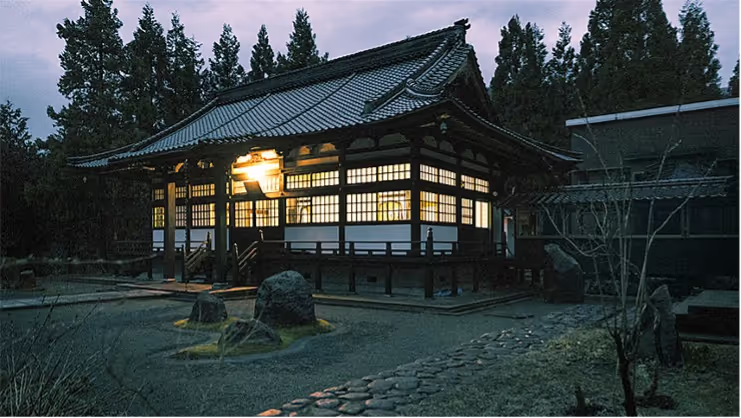
This contrasts with many Japanese monasteries and temples, whose revenues are largely derived from performing funerals. Antai-ji is both traditional and modern, following strict monastic routines and practices and a hierarchy, but with monastic and lay practitioners, men and women, both Japanese and non-Japanese, who live, work and practice together as equals. At the time of the shooting of the film, the abbot of the monastery was a German monk, Muho Nölke, the ninth and first non-Japanese abbot, who was succeeded by a Japanese nun, Ekō Nakamura, as the current and first female abbot. Going back in time, the fifth abbot was the eminent Zen master of sōtō of the 20th century, Kōdō Sawaki, famous for bringing Zen practice to the lives of ordinary people; some of his teachings are quoted in the film: ”It all starts when we say “I”. Everything that follows is an illusion” (Kōdō Sawaki, quoted at the beginning of the film).
The film Zen for nothing begins with a nighttime shot of Antai-ji, then moves inside, where a large Buddhist drum and a metal soundboard are struck, followed by a short chant in Japanese. This sets the stage for the film. Then we meet a young European woman, the protagonist, Sabine Timoteo, who travels through a large industrialized Japanese city, changes trains, takes time to smoke a cigarette on the platform of a station while waiting, and then on another train to the countryside along the coast and hills. Finally, we see her walking down a steep rural road, carrying a large backpack, and then climbing an even steeper stretch of stone steps, with fallen and brown leaves visible, suggesting that it is early autumn, and enter the monastery enclosure, Antai-ji.
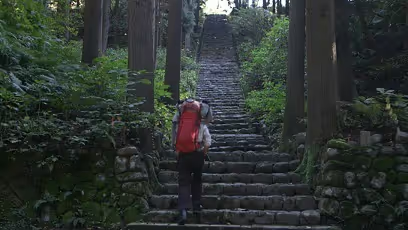
Sabine takes off her boots, enters the monastery building and meets a young American, a lay practitioner, who shows her the enclosure and explains some of the basic rituals and practices she would need for her stay there, such as bowing and Gasshō (”Put your palms together”). From then on, he learns things to a large extent by example, following what others do. He doesn't wear robes, like other lay practitioners; only monks wear robes, but not when working in the monastery and its grounds, where, including the abbot, they are largely indistinguishable from lay members of the Sangha community, except for their shaved heads.
Night. Darkness Silence Then, early in the morning. It's still dark. And quiet. A bell rings. Time for the first session of Zazen of the day, before breakfast. Meanwhile, breakfast is being prepared in the kitchen by practitioners, who are on call for breakfast that day. The time on the kitchen clock is 4.05 a.m. The others meditate, in sōtō zen style, in front of the wall of Zen-dō (”meditation room”). The abbot patrols seated meditators. Use the Kyōsaku (”Wake-up stick”) to deal blows to the back of the shoulders, two blows to each shoulder, of those whose posture is poor, or who are falling asleep. The meditator and the abbot bow to each other before and after the blows. Postural correction and muscle relief.
A bell rings. End of meditation. The songs continue. Then breakfast. The time on the kitchen clock is 6.07 a.m. A bell rings. Practitioners enter the dining room and, once seated, sing briefly and make a rice offering to the Buddha before eating. Breakfast is taken in silence and a meal and bowl protocol is strictly followed. Sabine learns by watching others. The sun rises and there is an autumnal morning fog. plus Zazen. Heavy rain. El Karesansui (Japanese Zen garden) is flooded. But it will dry and remake. No problem! A beetle walks on the tatami mat in the Zen-do. No one pays attention to it. On the outside, seen through the Shoji (traditional Japanese paper windows/walls), the sun has started to shine. A bell rings. This session of Zazen The morning is over. The participants leave the zen-do and they go out into the open air to begin their day's work in the monastery and its surroundings and grounds. As instructed by Master Chan Baizhang.
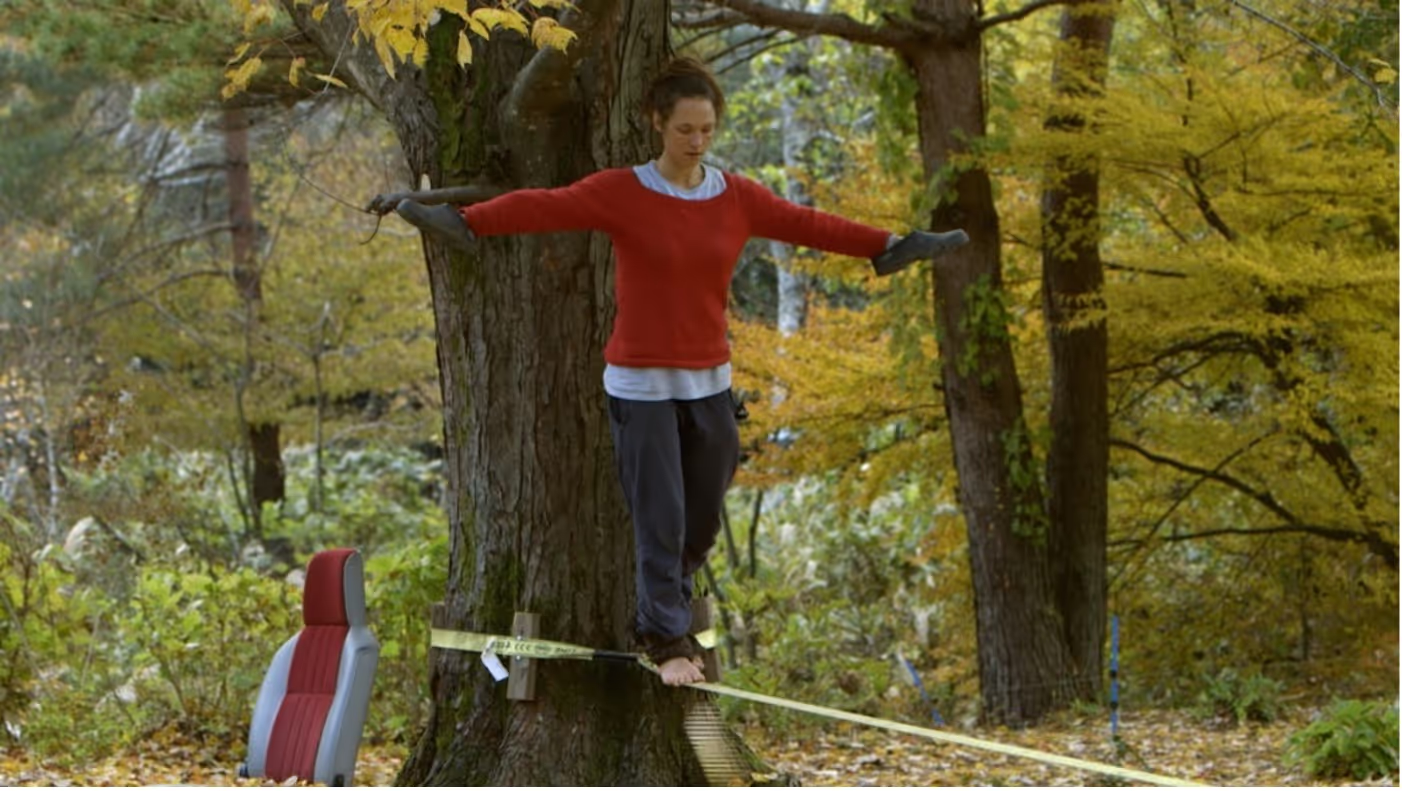
Outside, we heard conversations for the first time since the lights went out the night before. For more than 20 minutes of the film, no dialogue is heard, only natural and artificial sounds. Sabine and a monk talk about life. Then it's time to work. Including washing vegetables outdoors and preparing food in the kitchen indoors. Then eat. This is the midday meal, I suppose, since the strict practice of Zen is normally to abstain from eating after noon. The night is coming. Monks and lay people are seen showering in community. Nuns and lay women are seen chatting on their futons on the tatami-covered floor of their bedroom. Lights off.
It's in the morning again. Another autumnal morning fog. Daily morning tasks are carried out, such as mopping the floors of the house. A monk informs participants about the day's work tasks. Buildings must be repaired and maintained. Trees must be felled, sawn into pieces and cut for firewood. Weeds must be cleared for rice planting. The hens should be fed (for their eggs, I suppose, since Zen Buddhists are vegetarians). It's time for lunch at noon. Sing before and after a meal. It's time to chat. Then more work. Sabine reads a book of Zen poems in German.

Now winter has come! Snow covers the ground and the monastery buildings. Monastic and domestic routines continue. But relaxation is also important. A picnic in the snow in the hills above the monastery. Food, pots, utensils, bowls and chopsticks are carried up the hill by some of the practitioners, with snowshoes. Campfires are lit. What looks like a bottle of sake is heated in a pot. A non-alcoholic type, I suppose, since the consumption of alcoholic beverages is contrary to the fifth precept.
As long as you say that zazen meditation is a useful thing, something isn't quite right. Zazen is nothing special... Do you want to become a Buddha? What a waste of energy! Now is simply now. It's Just You (Kōdō Sawaki).
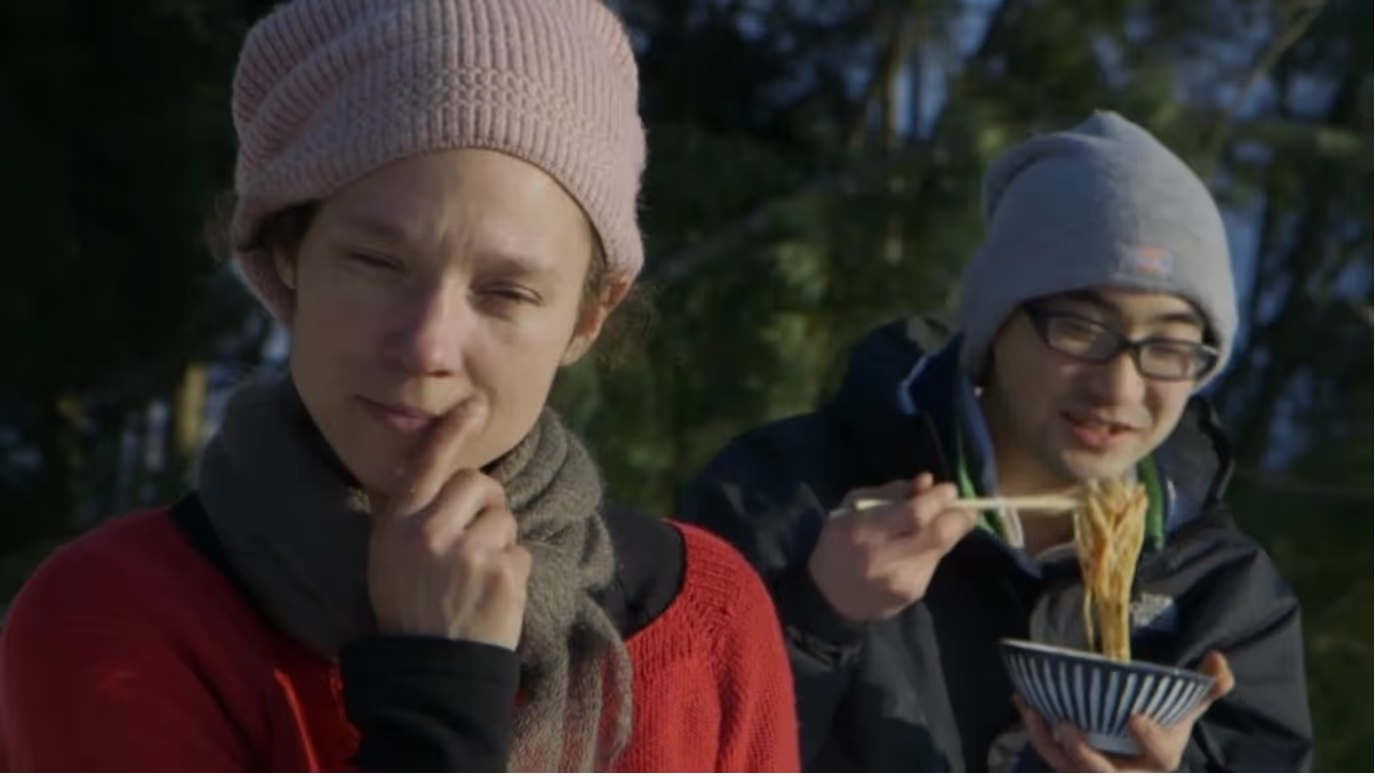
Practitioners share their thoughts and experiences of life at Antai-ji. Sabine is moved to tears when she quotes a French poem, ”Paint a portrait of a bird”, by Jacques Prévert, in which he compares the birdcage painted in the poem to a frame. At first she felt that everything related to monastic life was enclosed within frames, which frightened her. But little by little he became less scared and he began to like them. Now he treasures his experiences at the monastery.
The snow on the ground is melting. Green buds and leaves. Spring is here! Rice is sown. Bamboo shoots are collected. El Karesansui is redone. The monastery buildings are repaired and maintained. Life in Antai-ji comes back to life after a long, cold winter.
Sabine has an interview with Abbot Nölke, but not in the formal Japanese Rinzai Zen or Korean sŏn style, with Kōans, but rather an informal chat in German and she tells him how she felt protected and in good hands during her stay at Antai-ji.
Dead branches are cleaned from the monastery grounds. A bonfire is lit. A picnic is held, with what looks like beer. Non-alcoholic beer, I suppose. Rock music is played by some of the practitioners! Electric and acoustic guitars, and various percussion instruments. Sukha?
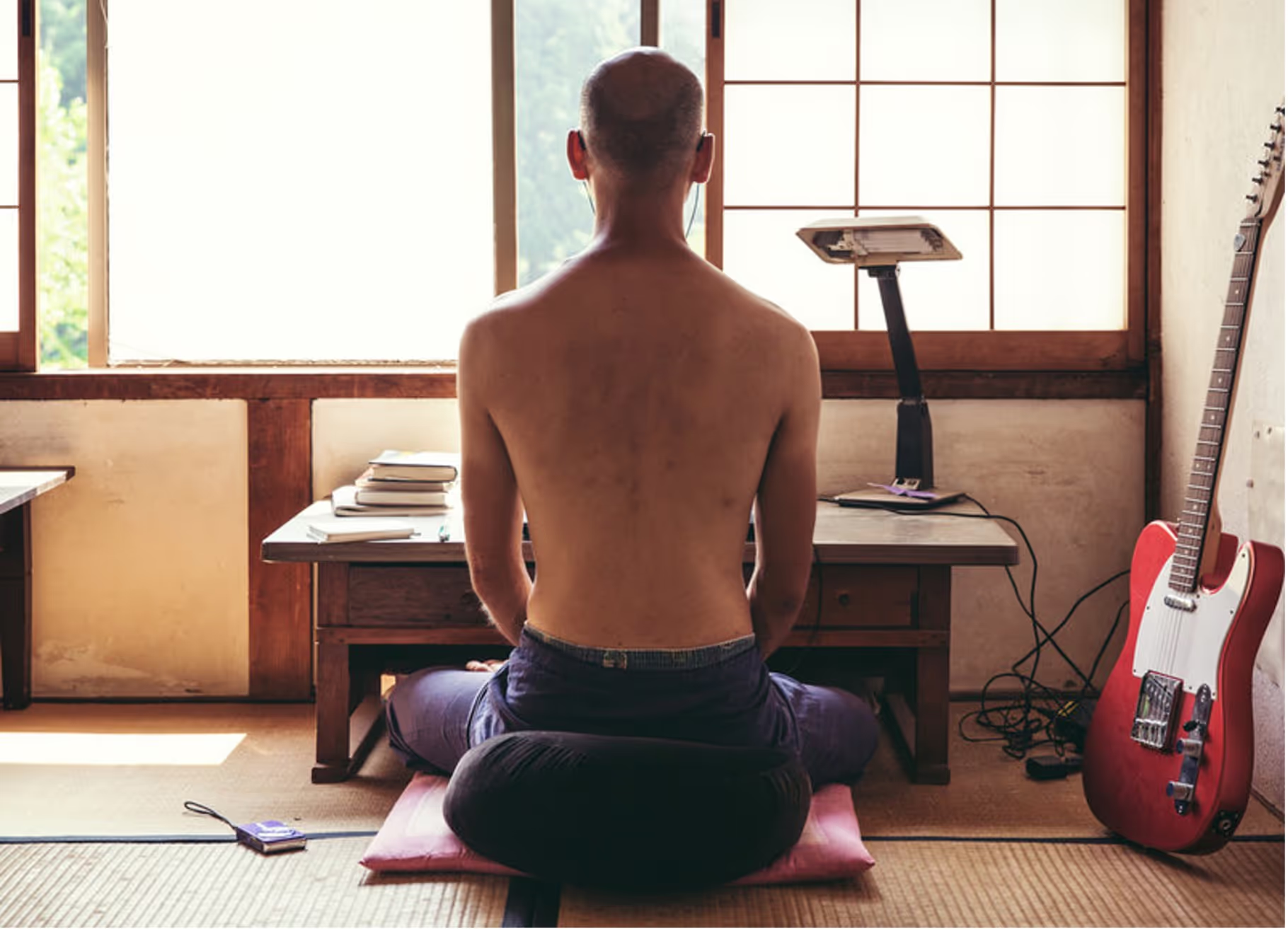
The next morning, Sabine shaves the head of a Japanese lay practitioner she became friends with in Antai-ji, Ekō Nakamura, who decided to become a nun (she succeeded Abbot Nölke as abbot five years later). The abbot informs the practitioners about the Takuhatsu and tells them that they will leave for Osaka the next day to beg for alms. A group of monks, led by the abbot and including Ekō Nakamura, now dressed as a nun, descend the stone steps of the monastery, with Sabine behind her, with her large backpack behind her. His time in Antai-ji has come to an end. In Osaka, he says goodbye to the monks and nuns and boards a train. The monks begin their alms rounds on the streets of the city.
”When you're dreaming, it's not clear that you're dreaming... Wandering within your own illusions means living your life like a sleepwalker” (Kōdō Sawaki).
And that's how the film ends.
Zen for nothing is a wonderful, beautiful, happy and evocative documentary about life in a Zen Sōtō monastery in Japan. Highly recommended.










